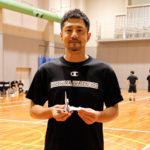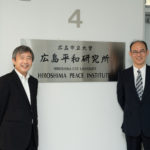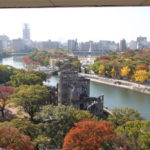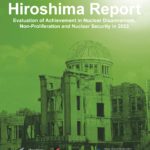Chapter 9 A City in Search of Peace Introduction
Radiation exposure from the atomic bombings caused the survivors to develop atomic bomb diseases. Acute radiation disorders continued to rage inside the bodies of the survivors for approximately two months, but the patients who were able to pull through it gradually recovered. The Hiroshima’s postwar history began with these survivors.
After seeing news of the atomic bombing of Hiroshima, many people intuitively felt that atomic energy would greatly impact the future of humankind. Two years after the bombing, they foresaw the eventual destruction of humankind through nuclear war, and began taking action aimed at achieving a permanent peace. In addition, people overseas who were greatly concerned about the destruction caused by the atomic bombing of Hiroshima and Nagasaki started movements to communicate the realities of the damage and to send relief to the A-bombed cities. This chapter outlines the steps taken to promote peace, carried out in various areas including the government administration, peace movements, and education in Hiroshima.
Attempts were made to shed light on the realities of the bombing immediately after it occurred. However, those attempts did not come to have an impact on society until the enactment of the San Francisco Peace Treaty. Following its enactment, the experiences, thoughts and opinions of A-bomb survivors were shared in various ways. This chapter will introduce case studies that elucidate the A-bomb survivors’ views on peace 60 years after the atomic bombing.








